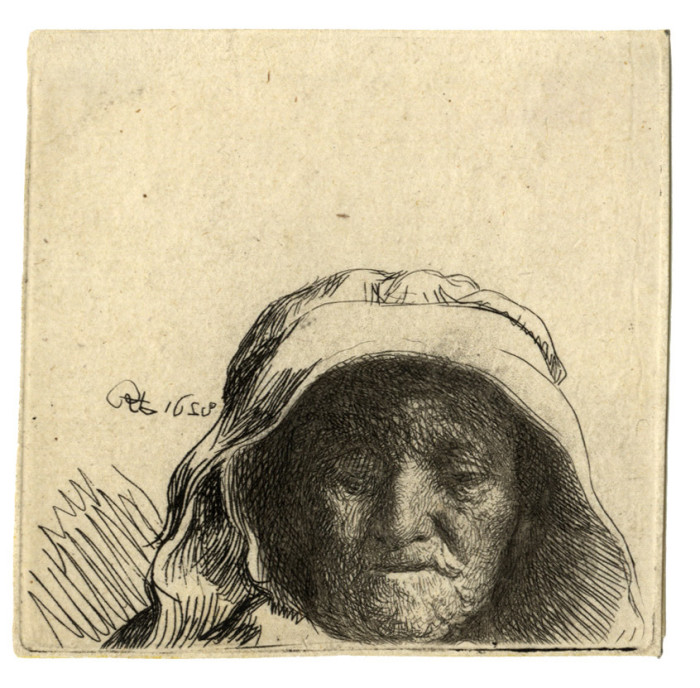The Artist’s Mother: Head Only, Full Face 1628
Rembrandt Harmensz. van Rijn
1606 Leiden – Amsterdam 1669
The Artist’s Mother: Head Only, Full Face 1628
etching; 63 x 66 mm (2 1/2 x 2 5/8 inches)
Bartsch 352, White/Boon second (final) state; Hind 2; The New Hollstein 6 second (final) state
This rare little plate is one of the earliest to be generally accepted as the work of Rembrandt. It is still experimental; the artist has not managed to get the tonal balance in the biting of the two states correct. The face, which was etched first and was never bitten deeply, is considerably paler than the hood, which was added later.
Further, the unusual composition makes the print look almost like a fragment; the head of the woman is oddly anchored slightly to the lower right of the image and points to Rembrandt’s early tendency to begin drawing with his etching needle without having a clear idea of the size or position of the intended image. In this case, although the first state (of which a unique impression survives in Amsterdam) shows that the artist used black chalk to develop a version that would have included part of the figure’s upper body, in the end, the artist cut away more than an inch of the plate just below her chin, reinforcing the idiosyncrasy of the portrait. Another print that Rembrandt made of his mother in etching and drypoint the same year (Bartsch 354) and in etching and engraving in ca. 1631 (Bartsch 343) demonstrate his rapid progress in a range of printmaking techniques.
Rembrandt’s mother provided a readily available female counterpoint to his own self-portraits. But his choice of her as subject matter also reflects a growing market at this time for images of old people, their time-worn faces providing a contrast to the long-established taste for comely young women. This aesthetic interest might also relate to the contemporary “picturesque” taste for such dilapidated old structures as ruins and humble farmhouses as well as peasants and beggars. The popularity of these motifs, frequently addressed by Rembrandt himself, might be explained in some cases by their familiarity, as well as by their freedom from complex or morally burdensome religious, historical, or literary themes.
